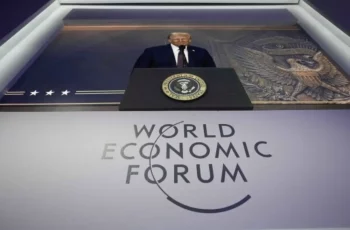
The history of The International North–South Transport Corridor (INSTC) goes back to 2000, when in St. Petersburg , at the Second International Eurasian Conference on Transport, an agreement was signed between Russia, Iran, India and Oman with the purpose to develop the transport networks between these countries to increase the volume and efficiency of freight flows.
To understand and appreciate the significance of this agreement, it is needed to imagine the scale of this project. The INSTC is a 7,200-kilometer multimodal transport route from St. Petersburg to the Indian port of Mumbai (the shortest route to India). It encompasses three routes: “Trans-Caspian ” – by ships across the Caspian Sea between Russian and Iranian ports; and overland: “Eastern“ (direct railroad connection through Kazakhstan, Uzbekistan and Turkmenistan with access to the Iranian railroad network) and “Western“ (railway through Azerbaijan to Iran). In 2024, 12.8 million tons were transported along two overland corridors of the INSTC. The main advantage of INSTC is that it reduces the distance of goods transportation by almost half. Transportation of containerized freights is becoming cheaper than on other more familiar sea routes.
For twenty years, only test freight shipments in limited volumes were carried out along the INSTC, and the corridor itself was considered only as a promising, but not a priority project. Thus, the first commercial transport was launched only in 2022. Everything changed radically after the beginning of the sanctions struggle of the collective West against Russia and especially after the launch of the Special Military Operation in Ukraine, when the unloading of goods at European ports, travel on European roads and the closure of the sky began to be blocked – all this forced to recall the INSTC project as part of a common approach to reorienting Russia‘s foreign relations to the East. The advantage of the INSTC is that it cannot be affected by Western sanctions.
In May 2023, Moscow and Tehran signed an agreement to complete the last necessary section of the INSTC western rail route from the Iranian cities of Rasht to Astara with a length of 162 km in very difficult rugged mountainous terrain with the need to build numerous tunnels and bridges. The entire project with a construction period of 3-4 years is estimated at $ 1.6 billion, of which $1.3 billion. amounts to a loan from Russia.
To date, 11 countries have already joined the INSTC project, but the conditions of cargo transportation and the speed of their processing do not attract most international companies to work on this route, which affects the total volume of freight flow and the payback of goods supplies. Paradoxically, over the twenty-five years of the INSTC project, the main cargo flow still lies on the “Western” route, and it does not yet have a through railway connection, which increases the cost of cargo delivery, taking into account additional transshipment.
What is the reason for the insufficient profitability of the INSTC at this stage, taking into account the existing internal problems and the recent complications in the foreign policy situation in the Middle East and Transcaucasia (South Caucasus) region?
Let’s start with the busiest “Western“ route (70 percent of the total INSTC freight turnover). From the border with Russia there is a double-track electrified railway route with a carrying capacity of 30 million tons, and further from Shirvan to Astara (on the border of Azerbaijan with Iran) there is an unelectrified single-track section with a carrying capacity of only 10 million tons.
Until the Astara–Rasht railway section is put into operation (which will increase the carrying capacity to 15 million tons), all cargo from Azerbaijan will continue to be loaded into road transport and delivered by road to the Iranian port of Bandar Abbas.
The longest “Eastern“ route has a through single-track non-electrified railway connection through Russia, Kazakhstan and Turkmenistan with further access to the Iranian railway through the Sarakhs border crossing and then to Bandar Abbas with a capacity of about 10 million tons. Despite the lack of need for transshipment of goods by road, due to the difference in width between the Russian and Iranian gauge, it takes time and money to replace wheeled trolleys at platforms and wagons of railway trains.
For its part, “the Trans-Caspian” route is limited by the low capacity of the Russian port infrastructure, the lack of railway approaches to Iran‘s Caspian ports, and the shortage and high wear of the cargo fleet. In total, 171 vessels with an average age of 40 years can be used on the route (most of them belong to Iran), it has a low container capacity – up to 200 20-pound containers and the ability to transport no more than 8 million tons. The possibilities of using river–sea vessels are limited. Navigation in the Caspian Sea has its limitations due to the shallow depths on our coast and the freezing of Russian ports in winter. In addition, we do not use one of the recognized and widely used tools of seamless multimodal logistics in the world – railway offshore platforms (rollers).
Recently, there has been a steady trend towards shallowing of the northern and central parts of the Caspian Sea. The situation is particularly unfavorable in the lower reaches of the Volga River due to the small number of floods that occurred this spring in the river basin. These factors led to a decrease in the volume of cargo transshipment through the port of Astrakhan by almost half: in January–May 2025, only 1.3 million tons were handled there, which is 40 percent less than in the same period last year. In general, the Russian ports of the Caspian Sea: Astrakhan, Makhachkala, Olya processed no more than 3.3 million tons in the first half of this year, or 35 percent less than the first half of 2024.
kilometers, and the water level has dropped by 2 meters. The sea in Kalmykia retreated by 10 km, and in northern Dagestan by 5 km. Many islands have become peninsulas.
At the same time, not only the shallowing of the Caspian Sea and the weak infrastructure of Russian ports, as well as the low capacity of land transport corridors, affected the overall functioning of the INSTC, but also the sharp aggravation of Iranian–Israeli relations, which resulted in the “12–day war“ and the bombing of Iranian cities and infrastructure facilities. Given that Tel Aviv considers the current truce only as a temporary cease–fire and does not consider it permanent, many freight carriers express concerns about the continued use of routes through Iranian territory in the foreseeable future. In addition, the strained relations between Tehran and Baku due to the Iranians‘ suspicions of allowing the Israeli Air Force free flight of UAVs through Azerbaijani airspace during the conflict with Israel also do not contribute to the smooth operation of the “Western“ route.
Meanwhile, the conflict with Israel and the United States has shown the leadership of Tehran that further more active participation in the development of the INSTC can give Iran more opportunities to receive more income from the transit of international goods to the Iranian budget and thus solve the problems of rebuilding the country’s war–stricken economy.
In general, according to Russian experts, today it is possible to work in relatively small volumes through the INSTC. Unfortunately, it is premature to talk about the organization of industrial rhythmic shipments, equivalent, for example, to container trains, due to the lack of high-quality infrastructure at all key points of the transport corridor. Therefore, a lot of work remains to be done, problems will be solved and difficulties overcome, and The International North-South Transport Corridor will become the most important link between Russia and “friendly“ countries ready to cooperate and trade with it in the future.










Comments